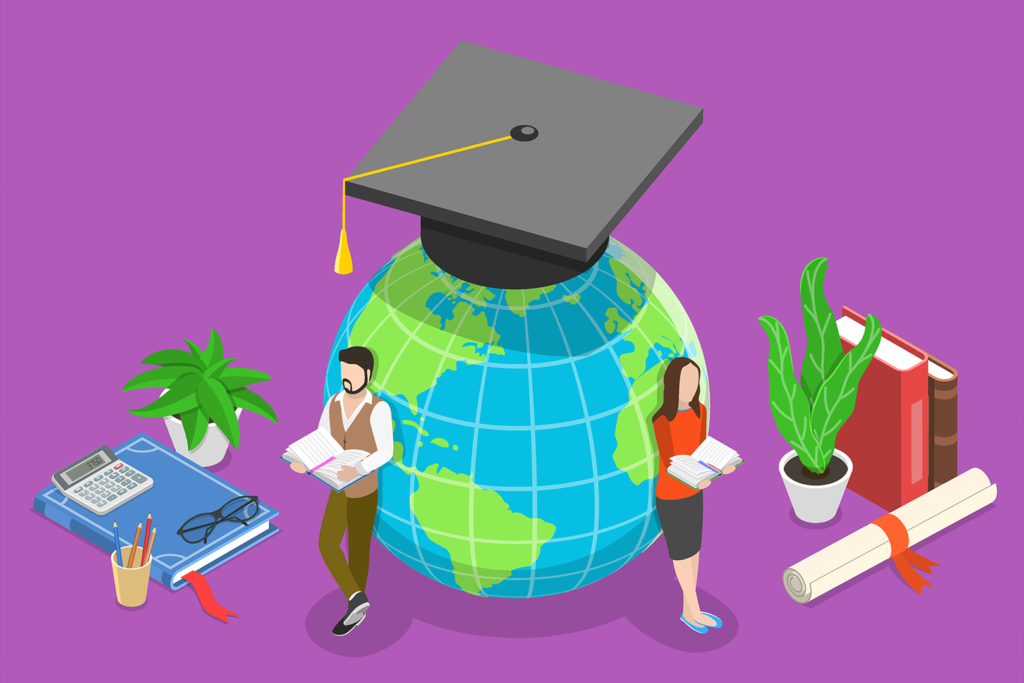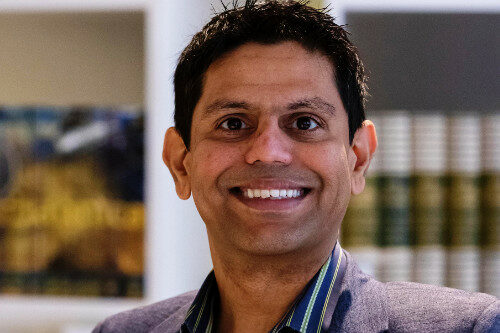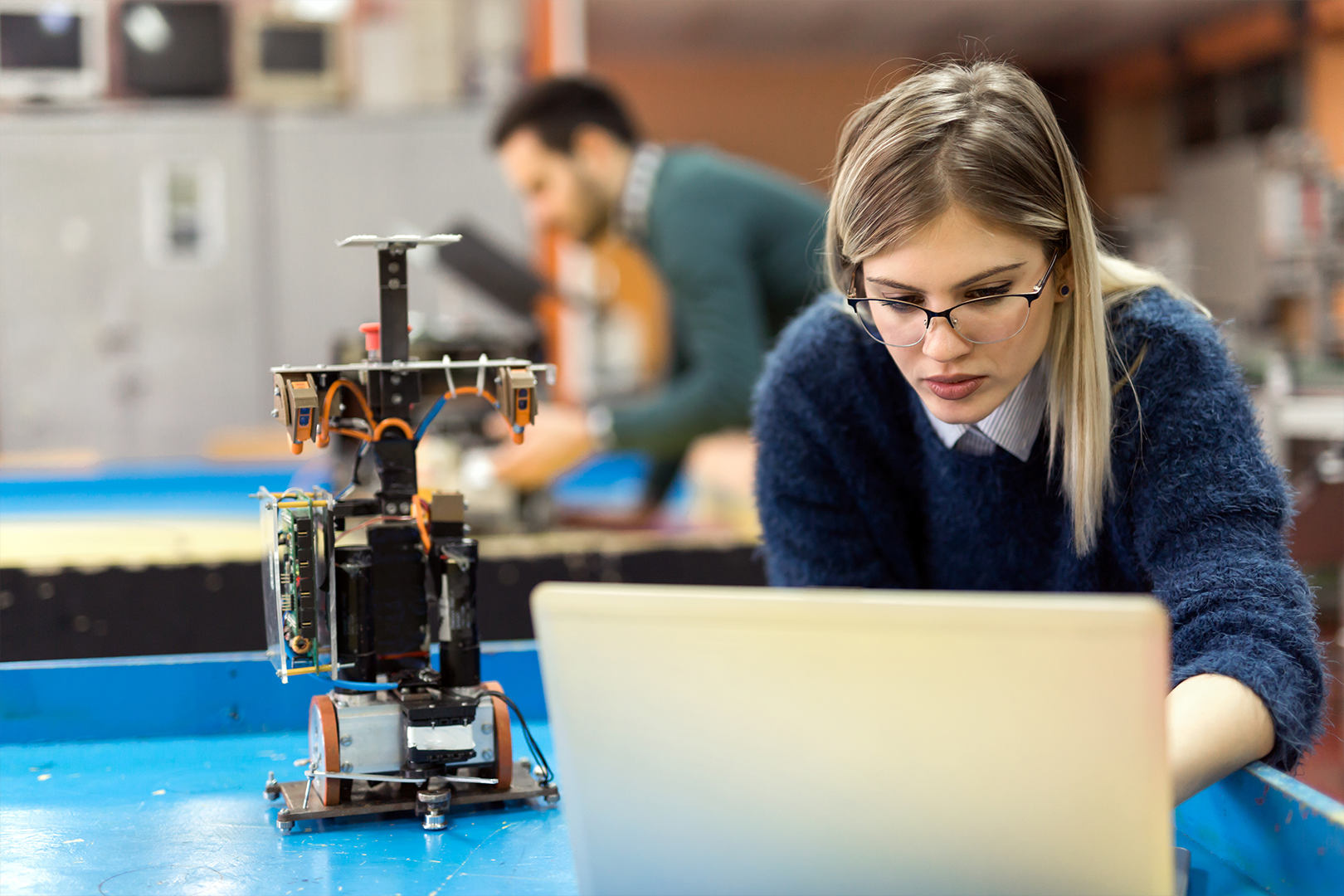No substitute for learning

Where did your passion for life-long learning come from?
I grew up in a family where both of my parents were educators. First hand I’ve had the opportunity to see how really good teachers can have an oversized impact on the community. Education has always been the quickest bridge between the haves and the have-nots, and particularly from a social mobility point of view there has not been a better tool that can help a lot of people.
We live in the 21st century, where things are changing pretty fast. The world we lived in 10 years ago is not the same world we live in today. In this kind of environment it’s important for us all to learn, unlearn, and re-learn. That can only happen if you have the penchant for life-long learning. I’m a business leader, an NYU professor, and on the board of Urban Upbound – a non-profit that focuses on tackling poverty and transforming life – so one of the constant themes I see is education being one of the levers that, when used effectively, can lift everybody all across the world. Education can benefit individuals, it helps families, it benefits communities, it helps countries.
There is also a difference between education and learning. Education is extrinsic and driven by a curriculum; learning is intrinsic and driven by curiosity – and curiosity is the basis of life-long learning. And I’m pretty big on the whole life-long learning piece, because if we lose our ability to think, learn, adapt and evolve, then the game is over.
Is there enough curiosity in teaching and in education?
Right now we are killing curiosity in the school system. Our current education model is based on an industrial revolution model. During the industrial revolution, we had taken the muscle power and converted that into machine power – and we just needed people to operate that, and people who were good at doing things that were repetitive. So the education model was much more focused on standardisation and memorisation.
According to the World Economic Forum Future of Jobs report, almost 65% of the jobs that our elementary school students will end up having have not been defined yet. In that kind of environment, what do you teach them over 18 years and four years of college that’s going to be meaningful? Also, almost 50% of the upcoming generation is going to be either entrepreneurial or self-employed, and these are not skillsets we help students pick up in the current school system.
So it’s not just about the delivery of knowledge anymore, it’s about the discovery of knowledge – how do you build on existing knowledge and discover new stuff. The goal shouldn’t be about grades and certification, but also about what sorts of experiences you’re picking up that allows you to solve problems.
So are humans predisposed to get less curious?
It’s a combination. Ninety percent of a child’s brain is formed by the age of five, so it starts in the environment you’re being raised. But it’s also true that teachers who were effective 20 years ago might not be as effective today because what we’re needing to learn is changing. How children are learning is changing, and the role of a teacher has changed and a lot of people have not realised that. We live in a world where we’re constantly inundated with information, so my personal take is that we’re all consuming a lot more information than we ever did but we’re processing less and less. To me that’s because cognitive information happens when you actually store information. But today we’re storing less and less information, and with devices in our hands all of the time we’re not observing, and with people sleeping less now it means we’re losing our ability to process information.

There’s more incorrect and bad information readily available than there’s ever been – and that’s a barrier to curiosity and good teaching, isn’t it?
That’s so true. Fake information has always been there – let’s not pretend it’s a 21st-century concept. But previously, to get fake information out to a mass group of people cost a lot of money, and it was difficult to deliver it. But today, at near-zero cost you are able to create information and disseminate it to the far corners of the world. And if you know how to hack some of the algorithms, it’s easier still. There was a 2018 MIT study that said bad information has a 70% higher chance of being forwarded or re-shared, and it takes six times as much effort to get good information to 1,500 people.
So let’s put this in context. If you look at technology platforms like search and social engines, they’re programmes like the PageRank algorithm – based on how many people are forwarding that information, and they use that to form the basis of whether the information is good or not. And the goal of social engines is to keep people trained on their website or app, and keep you hooked; so technology is putting us down a bad path and sometimes we don’t even realise it. So teachers need to do more of a job in terms of how to help students seek better information – ‘who wrote this article, why did they write it?’ – instead of them just clicking on the first two or three results on the results page.
We’ve had access to the internet for over 20 years now, so why has it taken education so long to catch up to the need to transform?
I think the awareness is there, but the action and impact is missing. In my own hypothesis what I find is it’s based on mindsets. Even if someone is trying to change things, because education is so political and emotional, there are multiple stakeholders who need to come together. For example, with COVID there are certain parents who say ‘my children are not learning from remote learning, we need to have them back in school.’ So one school might come back and say ‘let’s bring them back to school’, but then you will also have parents who don’t want their children to go back to school. Then you will have teachers willing to go back into the school system, and other teachers who feel at risk or vulnerable. So for every move you are trying to make, there will always be people with valid opposing views.
So we need a hybrid mindset – what I call integrated thinking. For example, if some teachers don’t want to come into work because they feel at risk, today with technology those teachers can still be at home delivering the lecture. Before COVID, there were over 600 million students who did not have access to any form of basic information. But with investment in remote learning, imagine a world where a teacher sitting in the middle of the UK could be teaching a child in Africa or Asia. Not having teachers in a local community should no longer have a negative impact because you can have a trained teacher reaching out to these students using technology and still give them a meaningful education experience. Then you can have someone locally who may not be trained as a teacher but who can still help the students with answering some questions and with homework. So the model can pivot in a way that’s meaningful.
So things haven’t moved on in education not because we don’t know what needs to be done, but because we haven’t had the political will, or the passion or the commitment to see it through.
In 10 years, will we be talking about a pre- and post-COVID world when it comes to education?
Pre-COVID, the thinking was that schools and colleges were the centre of learning and you had to go there. Post-COVID, we’ve realised that learning can happen anywhere and there are multiple models. So if I miss a lecture in the morning, that can be recorded and I can view it later. If I were sick I’d miss out on school for a week and be a week behind, but now if the classroom is recorded I have the opportunity to watch it at home. It also means that people on low incomes, who might struggle to get to school due to public transport costs, can in a post-COVID world have better access remotely. COVID has presented us with the chance to pause and ask ourselves ‘who do we choose to be?’ It has provided the opportunity to break with the past and reimagine a new and better world.
COVID has presented us with the chance to pause and ask ourselves ‘who do we choose to be?’ It has provided the opportunity to break with the past and reimagine a new and better world
You’ve touched on this throughout, but specifically what role should technology be playing in transforming education? Outside of remote learning, how else can it be a force for good?
I went to a school system where I was taught in front of a blackboard. My children are taught in front of a smartboard, where they can write things and print stuff. But do you think the quality of learning is going to be different whether you’re reading in a textbook, or on an iPad?
Well, if it’s the same text then it doesn’t make any difference how you’re reading it.
Exactly. Digital substitution is not digital learning. The way we are using technologies in a lot of cases is much more of a substitution as opposed to an enhancer. Great things can happen when tech is being used as an enhancer. So there are certain paths that can’t be used without technology: remote learning, for one. Another is augmented intelligence: think about a teacher who is in the classroom, who spends breaktime grading an assignment. It takes five minutes to grade an assignment, and if there are 20 kids in the classroom that’s an hour and 40 minutes of grading, assuming you’re efficient. Today, with the tech and AI out there, what if the grading is being done by technology?
Take this particular case: you and I take the same quiz of 10 questions – you’ve got all 10 answers right, and I’ve got all 10 questions right. From a teacher’s point of view, the two of us are comparable. But, what if you answered those 10 questions in five minutes, and I took 20 minutes? That actually suggests you understand the concepts better than me. Or the other thing that could happen is I might have got nine questions right in eight minutes, but then spent 12 minutes on another question. So these are potential insights the teacher could be getting, learning that one question is something I struggled to understand. So if you can get that sort of data, you can adjust how you’re teaching the class, or teaching individual students. So all of a sudden the teacher isn’t focusing on ticking boxes and giving out the grades, but they have greater insights provided by technology to personalise learning.
Another example is that people have different styles of learning. You might be a visual learner, and I might be an auditory learner. Technology allows you to support all different styles of learning. If a child has dyslexia, for example, to make that child sit in a classroom and read text is painful for them – they won’t enjoy the learning process. But with a read-aloud feature, they will be able to listen to the text and enjoy learning much more, and won’t be getting frustrated.
When technology is used right, particularly with augmented intelligence, it really allows us to take the path of redefining learning. It’s not just using technology as a substitution.
Are you hopeful that education will eventually use technology as an enhancer rather than a substitute? And how do we get there?
I think we will see a paradigm shift in how we approach learning. I think the level of awareness was there but there was nothing pushing us down the path. I think the coronavirus will make us rethink and reshape things. It’s a portal that opens an opportunity to break with the past, so that’s one reason I’m optimistic. The other reason is that the types of conversations I’ve been having with people across the world – we just did a partnership with Japan, who has asked us to look into a curriculum that blends analytical and creative thinking. So these things are starting to happen. There are also more conversations around ensuring more people have access to technology, and to broadband, so that people don’t fall behind and create an access divide.
So I’m optimistic that in 10 years we will have seen a significant shift from just grades and certification to experiences and skill.



